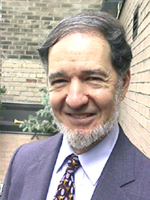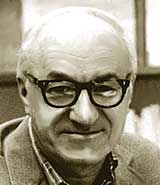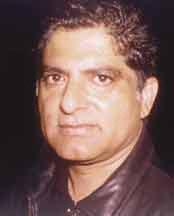Book review: Letter to a Christian Nation
Sunday, May 28th, 2006  I called Sam Harris’ “The End of Faith” a “critically insightful” book. Now Sam has come up with a slight volume titled Letter to a Christian Nation.
I called Sam Harris’ “The End of Faith” a “critically insightful” book. Now Sam has come up with a slight volume titled Letter to a Christian Nation.
The book has a bit of an identity crisis, however. The title would indicate he’s addressing Christians, but actually, as Sam himself says, it’s meant to “arm secularists”. As a result, the book has a preaching-to-the-choir flavor. But it’s interesting to consider: what is the long-term process by which the world can be brought to stop believing in magic? In particular, is it through arguments? I doubt it. The people on either side of this divide are talking different languages.
First, we need to separate the biological and cultural tendencies towards religion. It’s widely accepted—and the premise of this blog—that religion has a heavy biological component. To the extent it does, only evolution can address that problem. But it is not biology that compels people to believe that Mary was a virgin or that poverty-stricken Africans should be taught abstinence. We can accept that we will continue to have biological tendencies that leave us in awe of the unknown, or govern the neural processes associated with personal development, while still attempting to address the culturally-dependent aspects of religion which are causing people to kill each other, among other things.
So let us draw a roadmap for achieving a society where people no longer believe in counter-productive, harmful, and obviously stupid things. Given the arc of human civilization, I suggest this roadmap needs to extend over a century or more. Such a roadmap will alert us to what needs to be done now to promote the process.
A key element is the teaching of religion to children. This was highlighted by Dawkins in The God Delusion as well as by Sam in his new book. Although there is a natural attrition away from religion even among children of religious parents (rather extreme in my family’s case, where by my count only two of eight children maintain their parents’ beliefs), it probably averages less than 25%. Those that have discarded magical beliefs, however, are unlikely to have even one child who reverts to them. The issue, then, becomes the ratio at which religious belief decays. If it is 25% per generation, over a century the number of believers would be reduced by only 60%. If, however, the attrition ratio could be raised to 50% per generation, the number of believers a hundred years later would be reduced to a manageable 10%. But how can we bring one out of two people per generation into the ranks of the “brights”?
Dawkins, Dennett, and Harris appear to believe that the right approach is to talk real loud and take no prisoners. However, as mentioned above, that is unlikely to work.
We need a more sophisticated approach. We need to manage the conversation in a way which resonates with those we are addressing. We need to control the terms of the discussion. We need to establish simple, compelling themes which will resonate. A large part of this is semiological in nature—what are the words and messages which we want to create and disseminate?
For instance, consider the message “God does not exist.” We can embellish this message with all kinds of details, as Dawkins does, rebutting each and every argument that He might in fact exist. But the believers will simply tune this out. We need a message which, jujitsu-like, take advantage of the gullibility and proclivity to believe on the part of those we are trying to address.
I like messages of the form “God is X.” Such messages start off by accepting the premise that God does in fact exist. helping to guarantee their acceptance.
For instance, take “God is mean”. This leverages the nagging feeling shared by everyone that there is something a little bit wrong about a God that lets Katrina happen, that lets babies die, that watches over planes smashing into skyskrapers, and basically fucks all of us over more than we care to admit. It can’t be sugar-coated. Let’s spread this meme, gently.
Another example is “God is too busy”. Let’s face it—worrying about six billion souls is just too much work for One Guy. And that’s even before you think about the 10^23 other stars in the universe he has to worry about, a point made brilliantly by Carl Sagan in “Varieties of Scientific Experience”, which I’ll review in the near future. He’s so busy, he’s probably not really taking care of me like He should be, or listening really closely to my prayers.
Then we could go with “God is not that smart.” I mean, look at all the mistakes He’s made. We know he created Adam from dust and Eve from Adam’s rib, but let’s face it, in the physiological design department we can’t exactly give Him an “A”. Just ask my knee doctor, who says one of these days I’m going to need a replacement.
Let’s spread these memes, focusing on them with laser intensity and refusing to dilute our message. As they spread and gain credence through society, people will not suddenly switch sides and start disbelieving—they will just stop caring about a God who is mean, too busy, and not that smart. That can get us to the 50% attrition per generation level and reduce believers to 10% of the current level over the next hundred years, at which point they will be nothing more than a minor nuisance.

 Numenware readers are busy people. So here’s a handy, one-paragraph summary of Daniel C. Dennett’s new book,
Numenware readers are busy people. So here’s a handy, one-paragraph summary of Daniel C. Dennett’s new book,  Jared Diamond (picture,
Jared Diamond (picture,  All students of the brain will want to read Joseph LeDoux’
All students of the brain will want to read Joseph LeDoux’ 
 “Believe in yourself.” “You can do anything you put your mind to.” “Your possibilities are unlimited.”
“Believe in yourself.” “You can do anything you put your mind to.” “Your possibilities are unlimited.” Dr. Deepak Chopra’s (picture) (
Dr. Deepak Chopra’s (picture) (